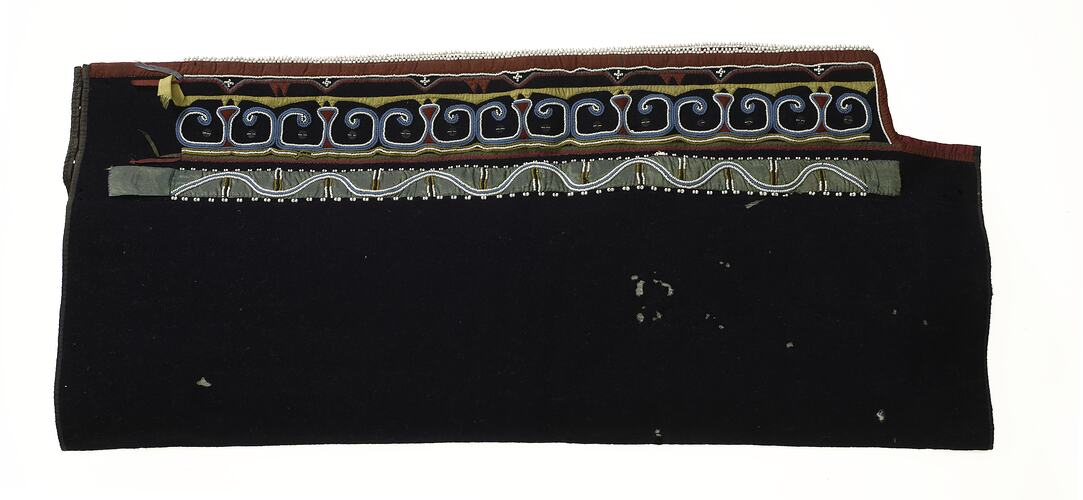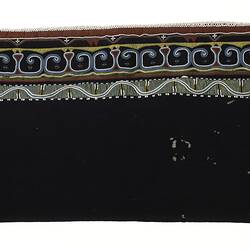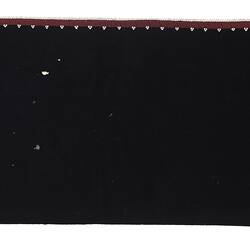Summary
Garments such as coats and leggings were sewn with distinctive geometric and curvilinear designs using silk ribbon and glass beads, the particular patterning denoting affiliation with particular North American Woodlands groups. The Mi'kmaq were known for a particular T-shaped element in their work. Beadwork and ribbon applique were also applied to the hems of cloth coats thought to have replaced leather garments made from deer or moose and sewn with sinews and trimmed with moose hair or decorated with porcupine quills. The use of ribbon applique and bead work on cloth garments was well-established by the late seventeenth and early eighteenth centuries, as these items were particularly popular trade items brought by the earliest European settlers in Canada, mainly fur traders, and buttons also appeared on these garments. However by the turn of the twentieth century, beadwork was being made for the tourist market and highly sought as a souvenir.
Physical Description
A single garment from a set of leggings made from trade cloth. It is decorated with silk ribbon applique and glass beadwork, the latter being geometric and curvilinear in design. The ribbon and beadwork is incomplete.
More Information
-
Object/Medium
Garment
-
Maker
-
Cultural Groups
-
Locality
-
Date Produced
-
Collector
-
Date Collected
-
Object Measurements
575 mm (Length), 246 mm (Width), 55 mm (Height)
L 195mm W 270mm?
-
Keywords
-
Collection Names
-
Type of item
-
Discipline
-
Category
-
Collecting Areas


